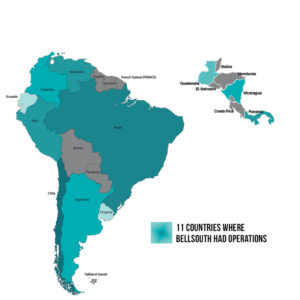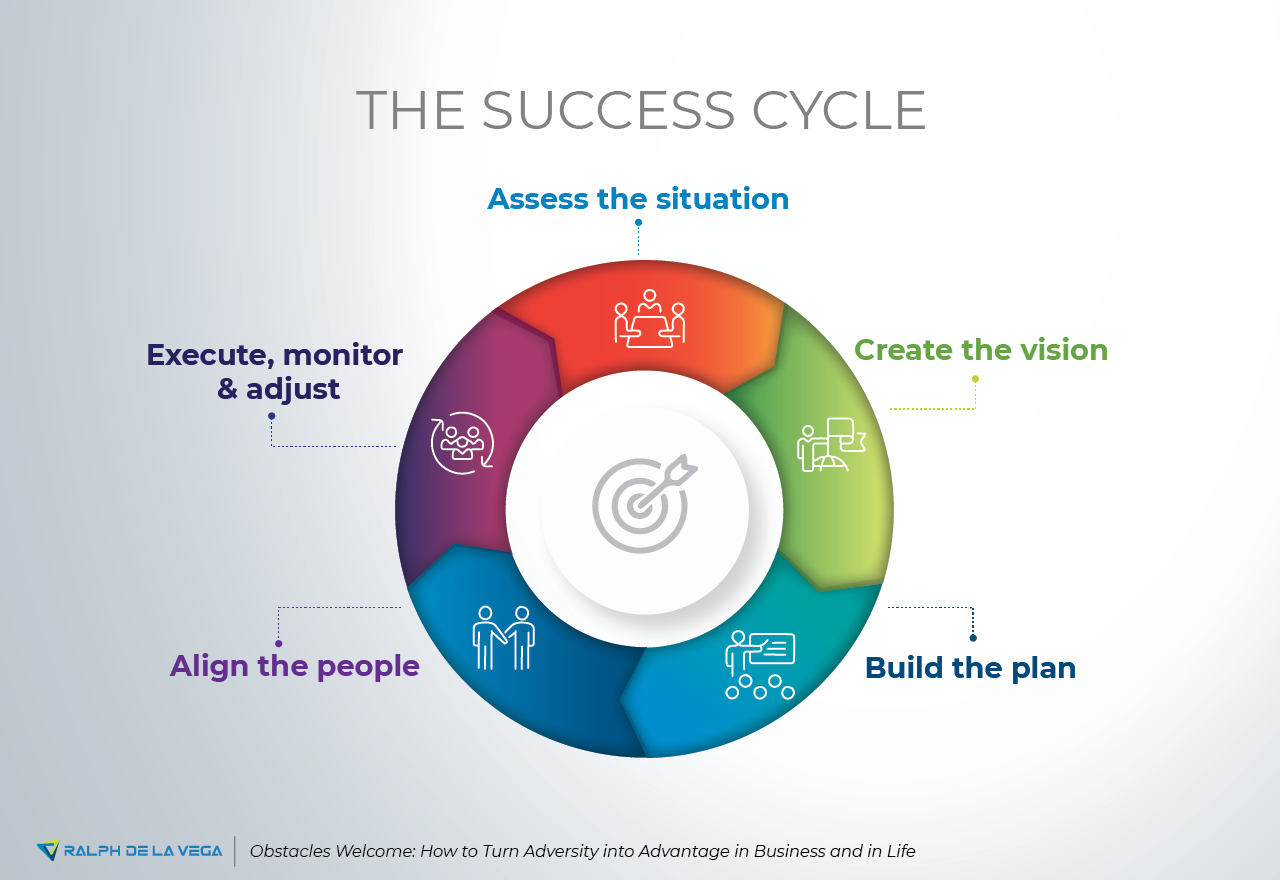I’m convinced that turbulent times provide us with the best opportunities to grow and develop as leaders.
Just like turbulent waters, turbulent times stir things up, creating opportunities for those who dare to tread in them. That’s why I tell leaders to embrace –not fear—economic upheaval, technological advancements, and other fast-changing environments.
I faced one of those opportunities in the early 2000s, when I became president of BellSouth Latin America. Latin America was (and continues to be) a great opportunity from my perspective, so I gladly accepted the job.
The good news: I was now responsible for BellSouth’s wireless operations in 11 countries: Argentina, Brazil, Chile, Colombia, Ecuador, Guatemala, Nicaragua, Panama, Peru, Venezuela and Uruguay. Together, these companies generated nearly $3 billion in revenues, employed 15,000 people and served more than 13 million wireless customers.
 The not-so-good news: While the business unit had grown rapidly, it had never been profitable. My job was to bring it into the black.
The not-so-good news: While the business unit had grown rapidly, it had never been profitable. My job was to bring it into the black.
Normal Becomes Turbulent
That would have been challenging enough in normal circumstances, but normal quickly became turbulent. Within a month after I took the assignment, the region was hit by a severe economic downturn that paved the way for monetary devaluations, unemployment, political uncertainty and, ultimately, severe financial challenges for the BellSouth wireless operations in the region.
Leaders Sign On
This was not a situation that called immediately for a new vision. This was about bringing stability to existing operations – to give us a fighting chance for the future. Once a degree of stability was attained, I brought the chief executive officers of the BellSouth operations in each country together for a planning and strategy session, a “summit meeting” of sorts. It got off to a rocky start as it became clear these businesses were used to being very independent. But, we worked through it. By the end of the meeting, we had a collaborative vision, a set of strategies and key initiatives for reaching the vision. It was hard work but fully worth the effort. When the meeting ended, every CEO literally signed the document that outlined our plan — and we went forward in unity.
The net result from all this? Even in those tough conditions, that year the operation became net-income positive for the first time in its history.
Focus on the Possibilities
In Latin America, the issues in play during that time seemed to hinder the prospects for our business to grow in a healthy and profitable way. This opportunity turned out to be a classic example of shifting the focus away from the barriers to success, and focusing on the possibilities. When you get a group of talented people to zero in on what is possible instead of obsessing about what is not, they feel liberated. There is a surge of creativity, energy, can-do spirit, and great results follow.
The Success Cycle
As a leader, you are bound to encounter turbulent times at some point in your career — if you haven’t already. Let me share with you my five keys to leading in turbulent times. I call this framework The Success Cycle. I have found it works in turbulent times and even when the waters are calm.

Keys to Leading in Turbulent Times
- Assess the Situation – The starting point when faced with a turbulent situation is a frank and honest appraisal. I call this phase facing the brutal facts. It doesn’t mean just dwelling on negatives. Along with being honest about the obstacles and limitations you might confront, it’s important to give just as much attention to the possibilities. You are not a victim unless you allow yourself to be paralyzed by whatever is difficult about your situation. The other choice is to direct your energies toward the opportunities inherent.
- Create the Vision for Success – Having assessed the situation, define what success looks like. In other words, define the win. Each situation is different. In Latin America, we focused on growing revenues and improving profitability. We simplified our goal as being number one or number two in revenue share (not customer share) in each country.
- Build the Plan – Once you’ve defined the win, it’s time to take concrete steps to achieve it. One of my favorite sayings is: Hope is not a strategy. In this third phase, you identify the strategies or key initiatives required to achieve the vision. A sound plan will highlight your top priorities and assign accountability for making them happen.
- Align the People – Next, you need to communicate the plan to everyone involved. Make sure you are clear, concise, and consistent so you cut through the noise and get your message across. Communicate beyond the executive level and reach out through the ranks. The team needs to be aligned with the top priorities and operational goals. You also need to align compensation with the plan. Managers must be clear with subordinates on who is responsible for what aspects of execution. Everyone needs to know what is expected of them.
- Execute, Monitor and Adjust – A good plan is a living instrument; it changes as the operating environment changes. Fine-tuning is almost always required based on careful monitoring of results. In fact, adjustment is a continuing process—and will be until you implement a new plan. (Just remember that making adjustments is not the same as perpetually starting over, or operating ad hoc, or not really having a plan at all.) Be ready to tweak and to communicate to your people why you are making the changes.
I was fortunate to have had an excellent team across the region and country leaders who executed the strategies we had jointly developed. Success followed but it was a very difficult assignment for all involved. We emerged victorious and closer as a team. In fact, members of the team still get together once a year in December to stay in touch.
I am very proud of the great people I had the honor to work with in Latin America. They faced adversity and turned it to an advantage.
If you were part of the BellSouth Latin America team during that time, I’d love to hear from you. I would also love to hear from others who have faced a similar turbulent situation.
What factors led to your success?



